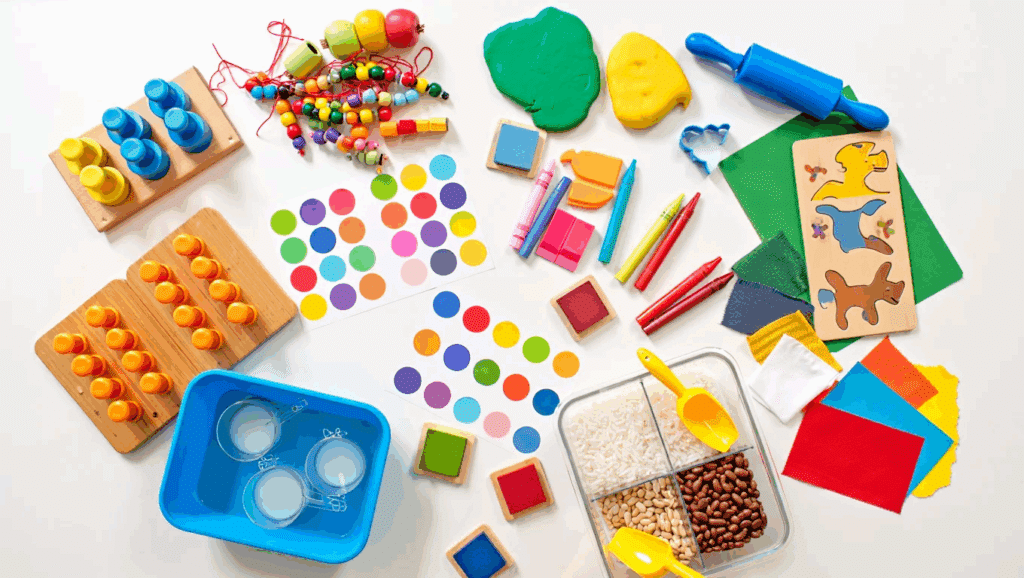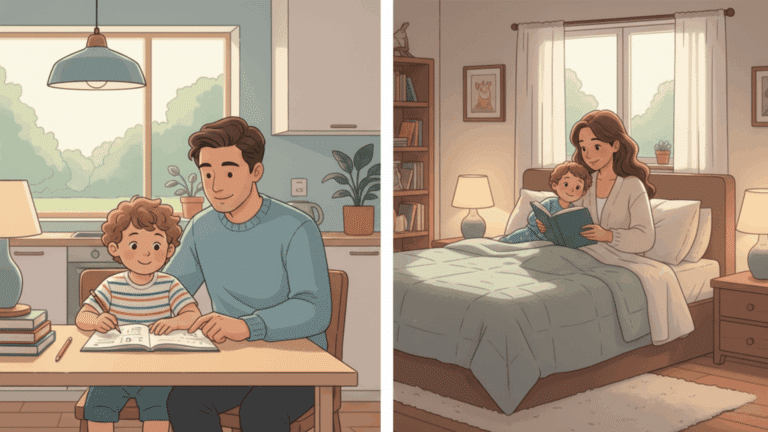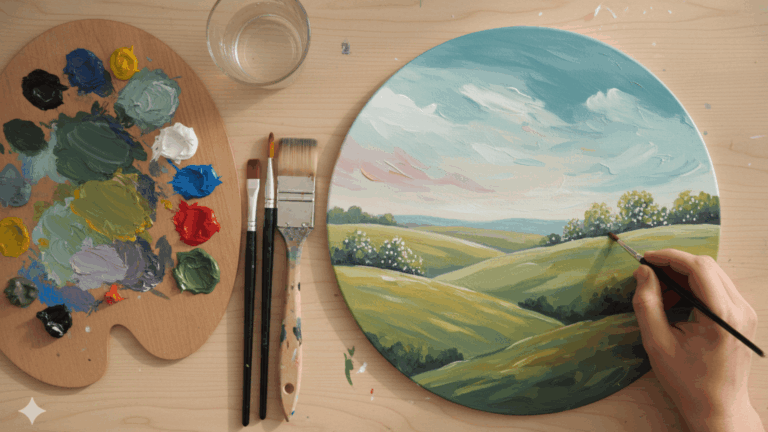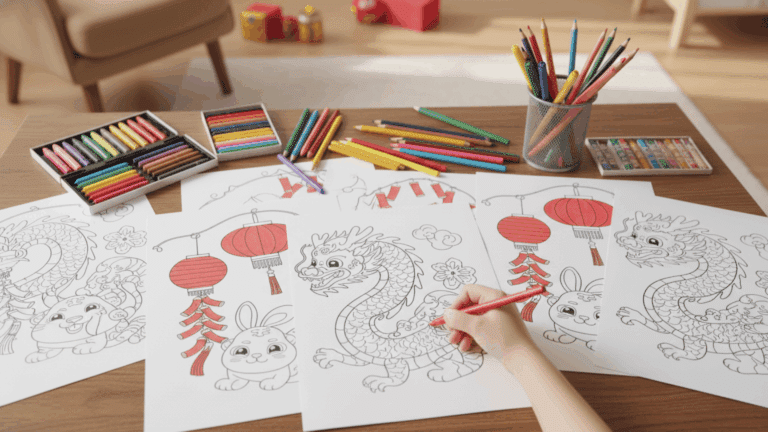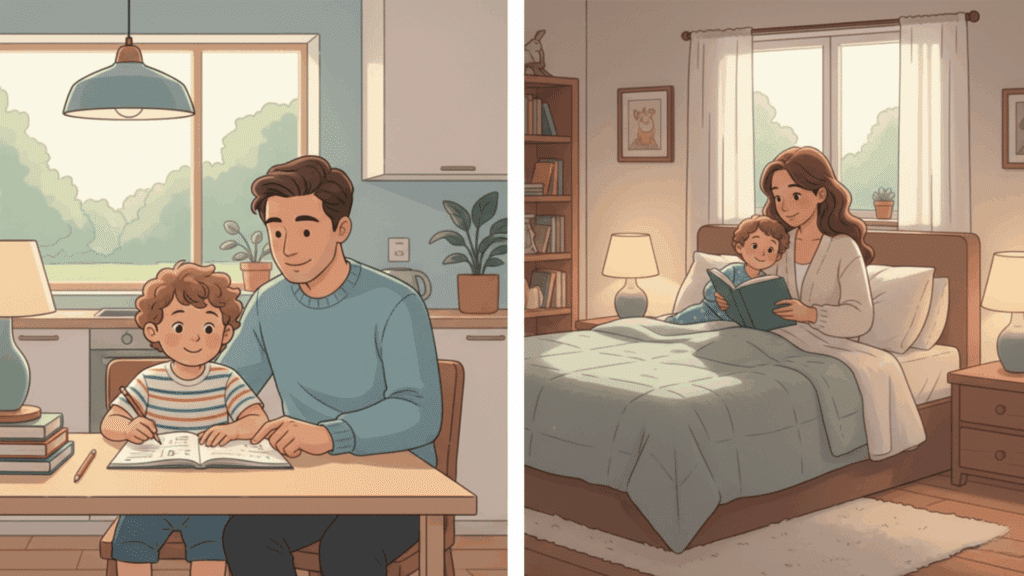Every parent knows the struggle of keeping a toddler engaged and learning. You want activities that build their skills while keeping them happy and focused.
Table activities for toddlers offer the perfect solution; they strengthen tiny fingers, boost concentration, and spark creativity all from one spot.
Here you will see the best table activities that actually work for busy families. Ready to turn your kitchen table into a learning playground?
Let’s find activities that will have your toddler asking for more seated playtime instead of running around the house.
What Are Table Activities for Toddlers and Why Do They Matter?
Table activities are structured play sessions where toddlers sit at a table or flat surface to engage in focused tasks. These activities include puzzles, coloring, stacking blocks, sorting games, and simple crafts.
They’re designed for children aged 1-3 years.
- Fine Motor Skills Development Table activities help toddlers develop hand-eye coordination and finger strength. Picking up small objects, holding crayons, and manipulating toys builds the muscles needed for writing later.
- Focus and Attention Sitting at a table teaches toddlers to concentrate on one task. This builds attention span and prepares them for structured learning environments like preschool.
- Independence These activities encourage self-directed play. Toddlers learn to complete tasks on their own, boosting confidence and problem-solving skills.
- Cognitive Growth Sorting, matching, and puzzle activities develop critical thinking. They help toddlers understand patterns, colors, shapes, and cause-and-effect relationships.
- Social Skills When done with others, table activities teach turn-taking, sharing, and following simple rules. These are essential skills for future group settings.
List of Table Activities for Toddlers
With the right mix of fine-motor, sensory, and creative activities, table time helps children build essential skills, learn about new materials, and gain confidence, all while having fun in a structured, engaging environment
Fine-Motor Activities
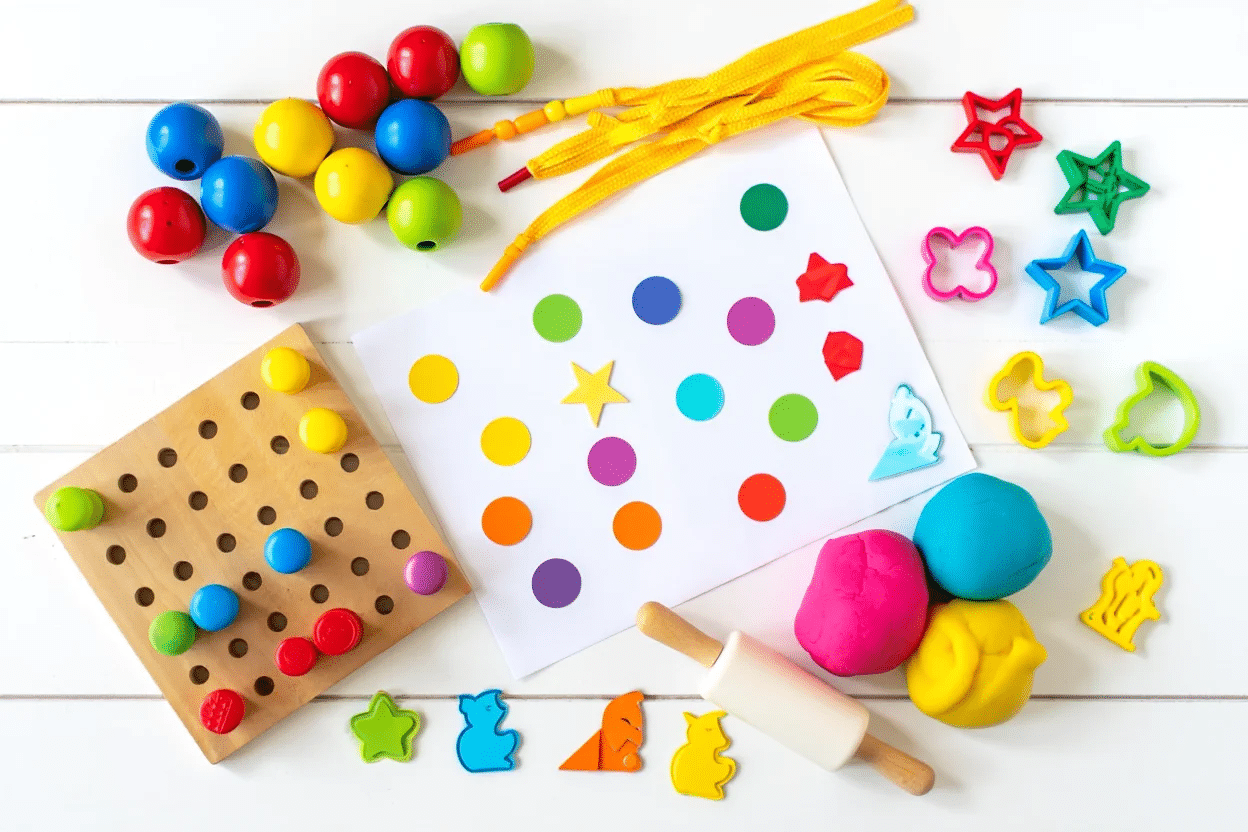
Fine-motor activities help toddlers strengthen hand muscles, improve coordination, and develop the skills needed for writing, dressing, and self-care.
These playful tasks make learning precise movements fun and engaging for little hands
1. Bead Threading
Threading beads builds hand-eye coordination and strengthens tiny finger muscles. Start with jumbo beads and thick laces. Toddlers love the satisfying click as beads slide down.
This activity teaches patience while preparing hands for future writing skills.
2. Sticker Peeling and Sticking Onto Paper
Peeling stickers requires precise finger movements that boost dexterity. Give toddlers dot stickers or simple shapes to place on paper. They’ll practice the pincer grasp needed for holding pencils later.
Plus, creating sticker scenes sparks storytelling and imagination.
3. Playdough Rolling and Shaping
Rolling playdough strengthens hand muscles and provides calming sensory input.
Offer child-safe tools like plastic rolling pins or cookie cutters. Toddlers can poke, squeeze, and flatten the dough. This open-ended activity reduces stress while building creativity and fine motor control.
4. Pegboard Play with Chunky Pegs
Pegboard play with chunky pegs helps toddlers build spatial awareness and hand coordination.
Large, colorful pegs fit easily in toddler hands and are safe from choking risks. Placing pegs in holes builds focus, problem-solving, and spatial awareness, while creating patterns turns learning into playful creativity.
Sensory Activities
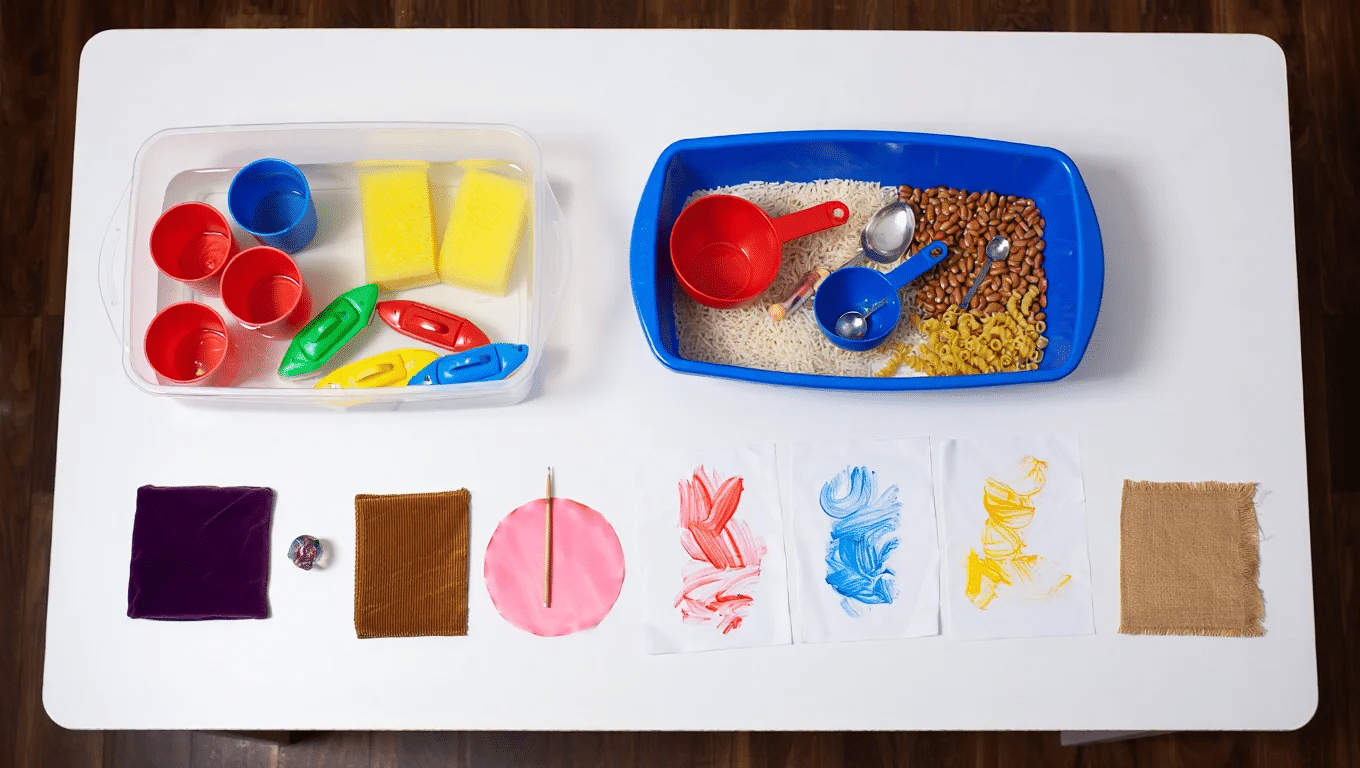
Sensory activities are essential for toddlers, offering hands-on ways to learn new textures, colors, and materials. These playful experiences support brain development, fine motor skills, and emotional growth while making learning fun and calming
5. Water Play
Fill a shallow tray with warm water and add cups, sponges, or small toys. Children learn about pouring, filling, and emptying while developing hand control.
Always supervise closely and expect some splashing and giggles.
6. Sensory Bins
Fill containers with dried rice, beans, or pasta. Add measuring cups and spoons for scooping fun.
Toddlers learn different textures while practicing pouring and transferring skills. This activity supports focus and sensory processing.
7. Finger Painting
Use washable, non-toxic paints on large paper sheets. The messy fun builds creativity and provides valuable sensory input.
Many children find finger painting relaxing and satisfying. Always dress them in old clothes first.
8. Handling Textured Fabric Swatches
Different fabrics provide varied sensory experiences for developing brains. Collect pieces like velvet, corduroy, silk, or burlap.
Toddlers enjoy feeling a variety of textures, learning about the world through touch and comparison.
Creative/Art Activities
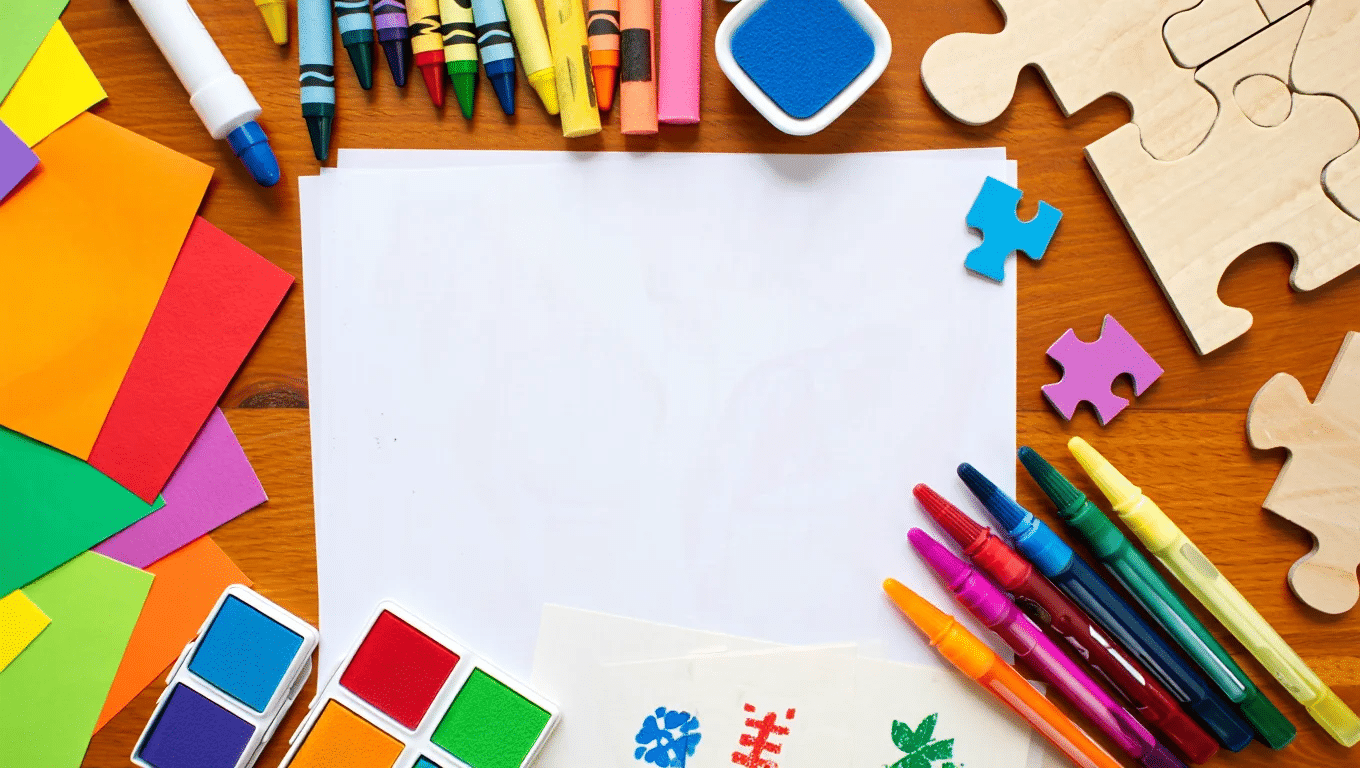
Creative art activities offer toddlers a joyful way to express themselves, and develop essential skills.
Through open-ended projects like collage, drawing, stamping, and puzzles, young children build fine motor control, problem-solving abilities, and confidence all while having fun.
9. Collage Making
Provide colorful paper scraps and washable glue sticks. Toddlers tear, place, and stick colorful paper scraps with washable glue sticks, building creativity and fine motor skills.
This activity encourages decision-making and artistic expression.
10. Crayon or Marker Drawing
Chunky crayons or washable markers on large paper help toddlers grip and make marks.
Early scribbles turn into shapes and letters, supporting both creative and pre-writing skills.This classic activity supports both artistic and academic development beautifully.
11. Stamping With Foam or Rubber Stamps and Ink Pads
Use large stamps with washable ink pads for easy handling. Toddlers press stamps onto paper and see instant results.
This activity builds hand strength while teaching patterns and sequences. Many children love repeating the satisfying stamp-and-reveal process.
12. Simple Puzzle Assembly
Puzzles build problem-solving skills and spatial awareness. Choose puzzles with 3-6 large, sturdy pieces for toddler hands. Wooden puzzles with knobs work especially well.
Children practice matching shapes and colors while developing patience and persistence.
Tips for Successful Table Time
- Remove breakables and choking hazards, and pad sharp corners for a safe play zone.
- Choose sturdy, toddler-sized tables and chairs with rounded edges and non-toxic finishes; feet should touch the floor, and the table should be chest height when seated.
- Use vinyl tablecloths or trays under messy activities and keep wipes and cleaning supplies nearby for easy cleanup.
- Organize materials in clear containers or baskets within your child’s reach to promote independence.
- Supervise closely during new or risky activities, but step back once your child is confident, always keeping an eye on them.
To Conclude
Table activities for toddlers offer more than just busy work – they build essential skills while creating precious moments together.
Don’t worry about perfect setups or mess-free sessions. Consistency matters more than perfection. Even five minutes of focused table time helps toddlers develop concentration and creativity.
These simple activities become building blocks for future learning. Fine motor skills learned at the table prepare hands for writing. Focus developed during puzzles helps with school readiness.
Start small, stay patient, and watch your toddler bloom through the power of seated play.


